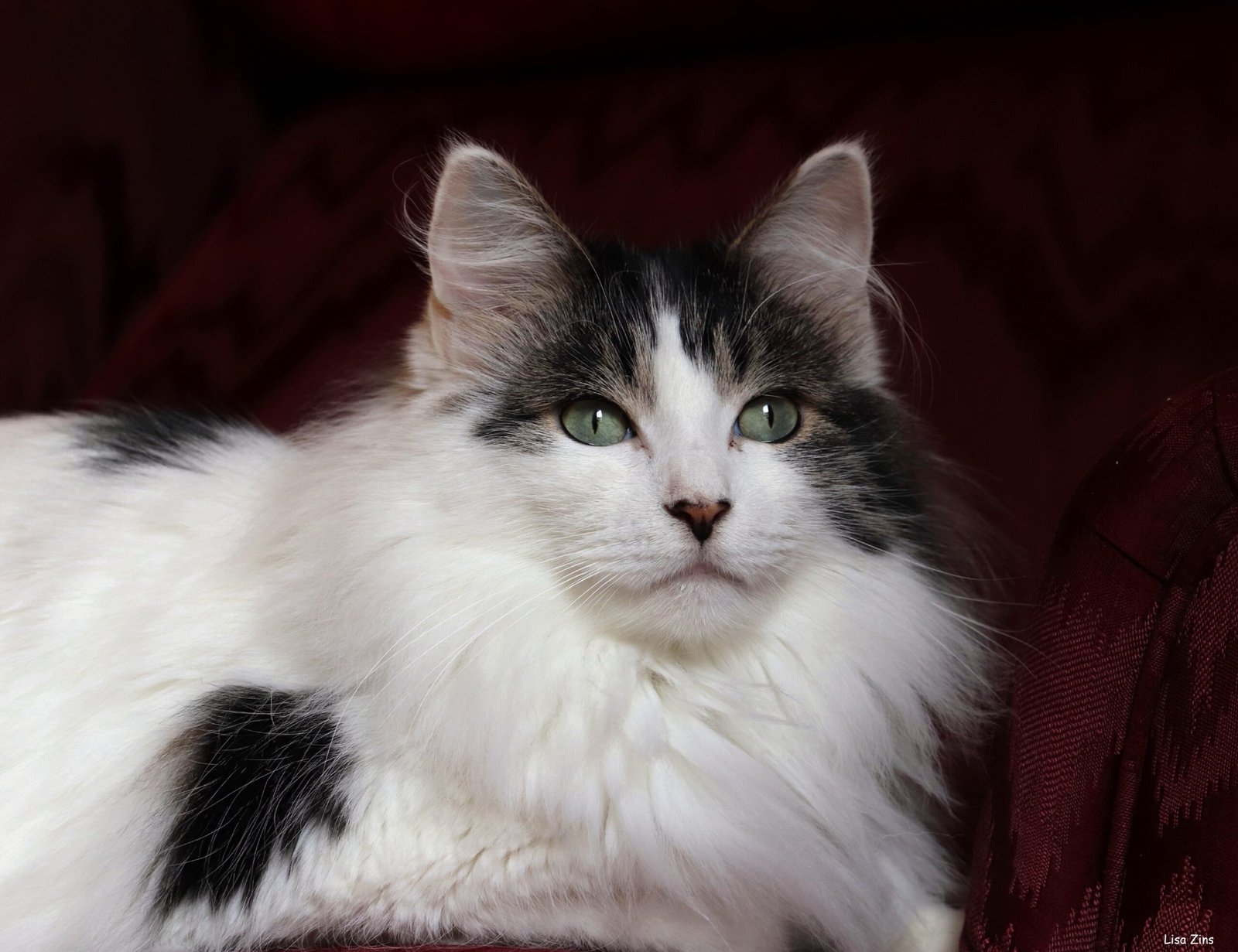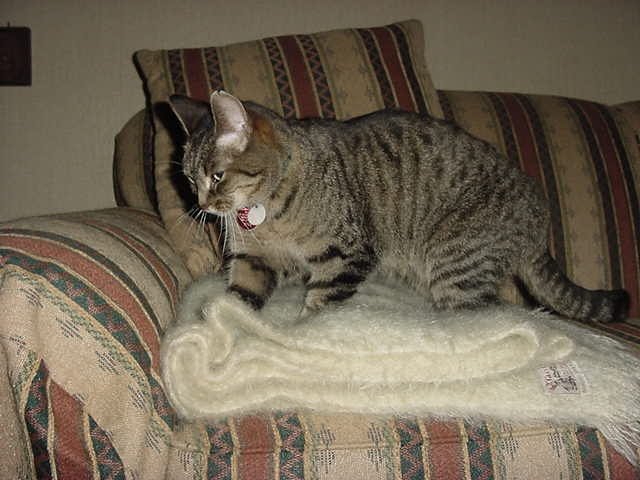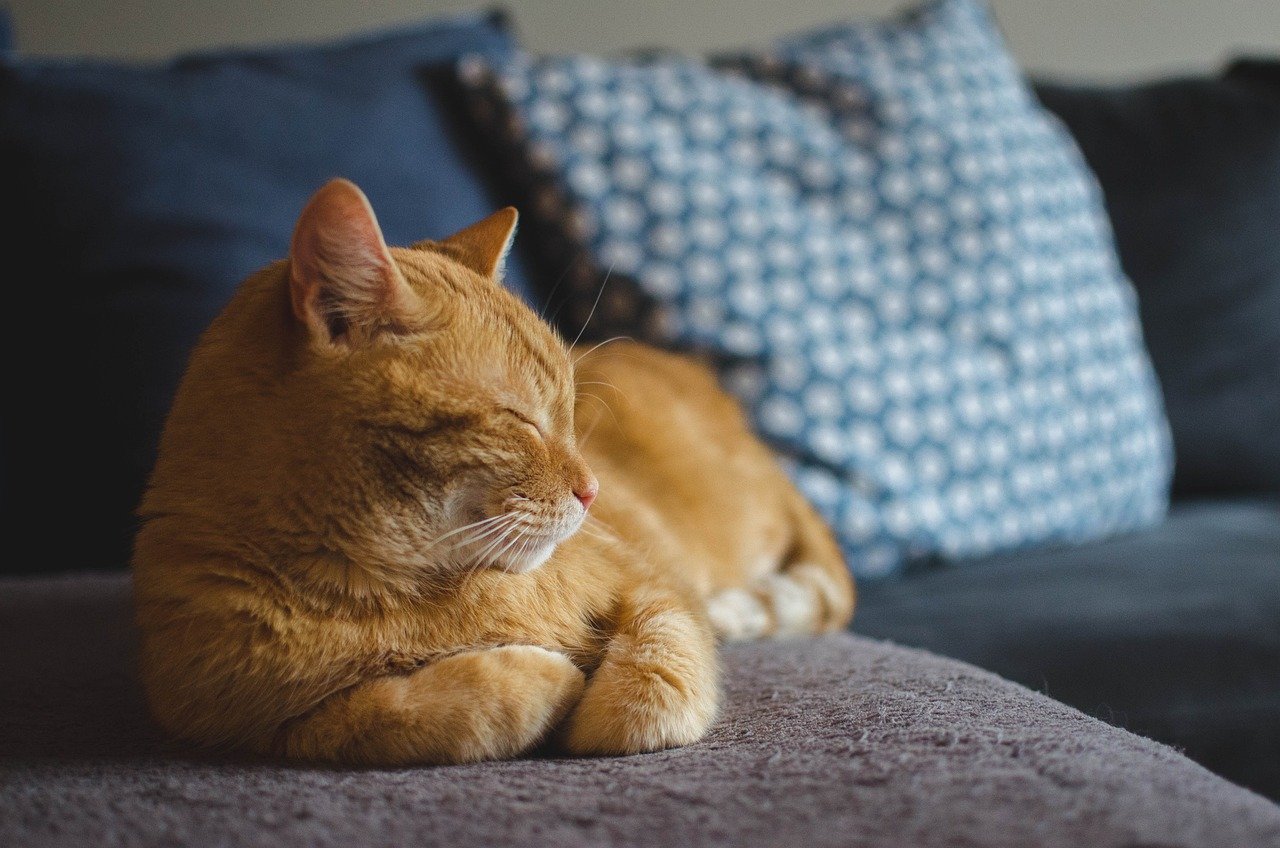There’s something magical about watching a cat transform from a timid creature into a confident feline. Cats, much like humans, develop emotional habits based on their environment. A safe and loving home can nurture these habits, turning your furry friend into a content companion. But what are these emotional habits? Let’s dive into the heartwarming world of feline emotions and uncover the secrets behind their cozy purrs and gentle nuzzles.
Trustful Purring: The Symphony of Contentment
In a safe home, cats often develop a habit of purring softly, a sound that resonates like a gentle lullaby. This purring is not just a sign of contentment; it’s a testament to their trust in their surroundings. When a cat feels secure, it will often purr while nestled on your lap or beside you. This behavior is akin to a human sigh of relief, signaling that everything is right in their little world. A cat’s purr can even help lower stress levels in humans, creating a symbiotic relationship of calmness. It’s as if both the cat and the owner are enveloped in a shared bubble of tranquility.
Affectionate Head-Butting: The Feline Kiss

When a cat feels safe, it may develop the endearing habit of head-butting or “bunting.” This isn’t just a quirky behavior; it’s a sign of affection and trust. By rubbing their head against you, cats are marking you with their scent, claiming you as part of their territory. This gesture is a feline version of a kiss, a way to say, “I love you, and I feel safe with you.” It’s a behavior that melts the heart of any cat lover, reinforcing the bond between human and feline.
Playful Antics: Expressing Joy Through Movement
A cat that feels secure will often indulge in playful antics, from chasing imaginary prey to pouncing on unsuspecting toys. This playful behavior is a sign of a happy and emotionally healthy cat. In a safe home, cats feel free to express their natural instincts, showcasing their agility and curiosity. It’s a delightful sight to watch a cat leap and bound, embodying pure joy. These moments of play are not just fun; they’re essential for a cat’s emotional well-being, providing mental stimulation and physical exercise.
Gentle Kneading: A Nod to Kittenhood

Cats often knead with their paws, a behavior that harks back to their days as kittens. This habit is a sign of comfort and security, reminiscent of nursing from their mother. In a safe home, cats feel at ease to knead on soft surfaces, whether it’s a cozy blanket or your lap. This rhythmic motion is akin to a human’s comforting habit, like twirling hair or tapping fingers. It’s a soothing ritual that signifies trust and contentment, a reminder of the nurturing environment they are in.
Vocal Communication: The Language of Love
In a nurturing environment, cats often develop a more vocal communication style. They may greet you with a friendly “meow” or engage in a back-and-forth conversation. This vocalization is a sign of their comfort and willingness to interact. Cats use their voice to express a range of emotions, from excitement to curiosity. It’s as if they’re inviting you into their world, eager to share their thoughts and feelings. This habit strengthens the bond between cat and owner, creating a dialogue of love and understanding.
Relaxed Grooming: A Sign of Self-Assuredness

Grooming is a natural behavior for cats, but in a safe home, it becomes a relaxed and leisurely activity. Cats will often groom themselves or each other, a sign of self-assuredness and mutual trust. This behavior is akin to a human pampering session, a way to unwind and feel good. When a cat grooms, it’s not just about cleanliness; it’s a ritual of comfort and care. In a safe environment, cats feel free to indulge in this habit, showcasing their contentment and emotional well-being.
Curious Exploration: The Adventurous Spirit

A safe home encourages a cat’s natural curiosity, leading to a habit of exploration. Cats love to investigate their surroundings, from peeking into nooks and crannies to observing the world outside a window. This behavior is a sign of confidence and security, a testament to their adventurous spirit. In a nurturing environment, cats feel emboldened to explore, satisfying their innate curiosity. It’s a joy to watch as they discover new corners of their world, their eyes wide with wonder and excitement.
Comfortable Sleeping: The Art of Relaxation
Cats are known for their love of sleep, but in a safe home, this habit becomes an art form. They stretch out in the sunniest spots, curl up in cozy corners, and nap with abandon. This behavior is a sign of ultimate relaxation, a testament to their sense of security. In a nurturing environment, cats can let their guard down, indulging in long, restful slumbers. It’s a delightful sight, a reminder of the peace and tranquility that a safe home provides.
Gentle Nuzzling: The Warm Embrace
Nuzzling is a tender habit that cats develop in a safe environment. They will gently nuzzle against you, seeking warmth and closeness. This behavior is akin to a human hug, a way to express affection and seek comfort. In a nurturing home, cats feel at ease to engage in this intimate gesture, reinforcing the bond with their owner. It’s a heartwarming habit, a reminder of the love and security that a safe home fosters.
Confident Independence: The Balance of Freedom
In a safe home, cats develop a confident sense of independence. They feel secure enough to roam freely, knowing they have a loving home to return to. This habit is a sign of their emotional maturity, a balance between freedom and attachment. Cats in a nurturing environment are self-assured, comfortable in their own company yet eager to share moments with their owner. It’s a beautiful balance, a testament to the security and love that a safe home provides.
In the end, these emotional habits are not just behaviors; they’re expressions of love and trust. They reveal the profound impact of a safe and nurturing environment on a cat’s emotional well-being. So, if you’re a cat owner, cherish these habits, for they are the heartwarming results of your love and care. What other delightful habits have you noticed in your feline friend?
Hi, I’m Bola, a passionate writer and creative strategist with a knack for crafting compelling content that educates, inspires, and connects. Over the years, I’ve honed my skills across various writing fields, including content creation, copywriting, online course development, and video scriptwriting.
When I’m not at my desk, you’ll find me exploring new ideas, reading books, or brainstorming creative ways to solve challenges. I believe that words have the power to transform, and I’m here to help you leverage that power for success.
Thanks for stopping by, Keep coming to this website to checkout new articles form me. You’d always love it!






